In a world where annoying mosquito bites can spoil our outdoor experiences or invade our homes, nature provides us with effective, natural, and aromatic solutions, which is ideal if you’re someone who dislikes using toxins in your home.
Discover in this article 11 plants that not only embellish your garden but also serve as natural guardians against insects, especially mosquitoes.
Immerse yourself in the world of functional gardening and find out how these plants can become your allies in the battle against pesky insects!
1. Citronella

Citronella, scientifically known as Cymbopogon nardus, is a perennial herbaceous plant native to tropical regions of Southeast Asia.
It is a plant famous for its Irresistible citrus scent and its properties as an insect repellent, especially against mosquitoes.
Citronella is characterized by its long, narrow leaves that can reach a height of 1 to 2 meters.
Its leaves emit a strong and fresh aroma when rubbed, which is used in aromatherapy, candle making, essential oils, and insect repellent products.
While considered a safe plant, some individuals may be sensitive to direct skin contact, so it is recommended to conduct an allergy test before using citronella essential oil.
Regarding cultivation, it prefers warm and humid climates. It can be grown in pots or directly in the ground, always in areas with good sun exposure and well-drained soil.
In summary, citronella is a versatile plant that extends beyond its pleasant fragrance, providing practical benefits by naturally repelling insects, making it an excellent choice for gardens and outdoor spaces.
2. Lavender

Lavender, scientifically known as Lavandula, is an aromatic plant belonging to the Lamiaceae family.
Native to Mediterranean regions, lavender is valued for its distinctive aroma, attractive flowers, and diverse uses in both gardening and essential oil production.
Lavender is a perennial shrub that can vary in size, ranging from a few centimeters to over a meter in height.
Its leaves are linear and silver, and its flowers appear in dense spikes of violet color, although there are varieties with white or pink hues.
It possesses a sweet, floral, and herbaceous fragrance. Lavender flowers contain essential oils widely used in perfumery and aromatherapy.
It is also appreciated for its properties as an insect repellent, including mosquitoes and moths.
Lavender prefers well-drained and sunny soils. It is hardy and drought-tolerant, making it suitable for warm climates. It can be cultivated in pots or gardens.
In addition to its ornamental and cosmetic uses, lavender has been employed in traditional medicine to alleviate insomnia, reduce stress, and treat headaches.
It is also known for its antibacterial and anti-inflammatory properties.
This plant can be used in making potpourris and scented sachets, as well as in the kitchen for sauces, desserts, and beverages, adding a floral and aromatic touch.
As you could read, lavender is a highly versatile plant that not only adds beauty to your home but can be maximized for its various uses.
3. Marigold
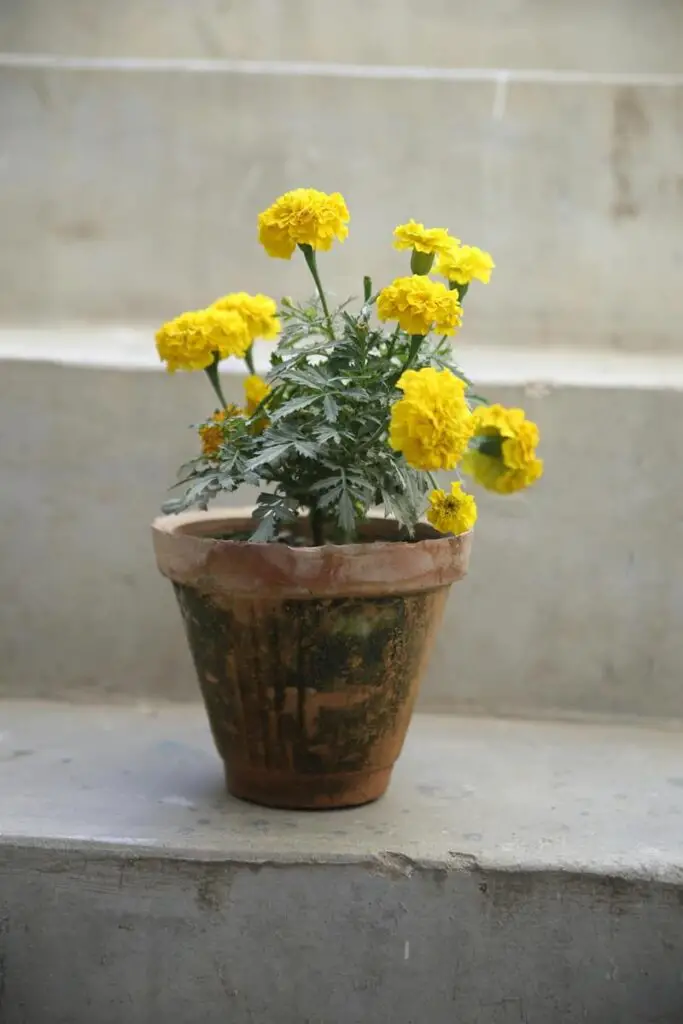
Marigold, scientifically known as Calendula officinalis, is an herbaceous annual or biennial plant prized for its bright yellow or orange flowers.
With a long history in traditional medicine and a vibrant presence in gardens, marigold is more than just a simple flower.
Marigold has dark green leaves and branching stems. Its flowers are large, resembling daisies, with brightly colored petals, typically in yellow or orange hues.
It is a hardy plant that prefers well-drained soil and full sun. It can be cultivated in gardens or pots.
Marigold is believed to have insect-repelling properties, making it a useful addition to gardens.
It has also been historically used in traditional medicine to address skin issues such as mild burns, irritations, and wounds.
Additionally, it contains anti-inflammatory and healing properties.
Another characteristic is that marigold flowers attract bees and other beneficial pollinators to the garden.
In summary, marigold not only adds a vibrant touch to gardens but also offers a range of practical benefits, from medicinal properties to its potential in the kitchen.
Whether for its colorful flowers or healing properties, marigold is a versatile and valuable plant.
4. Peppermint
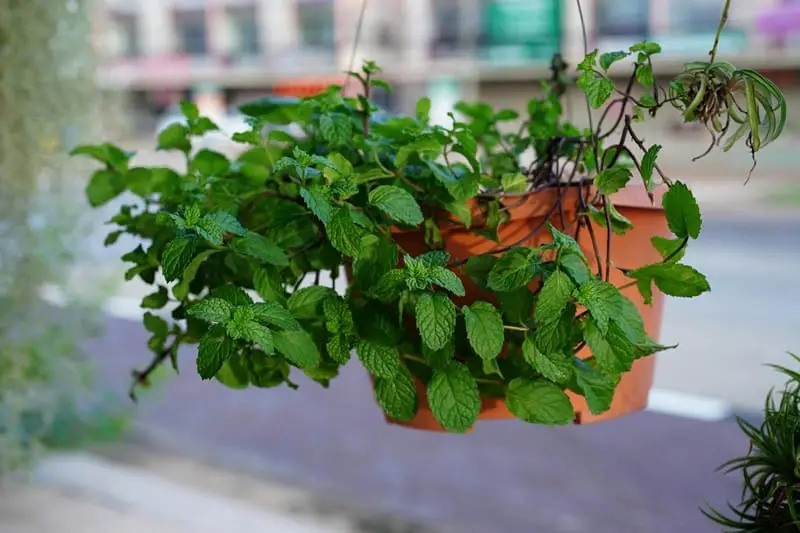
Mint, belonging to the genus Mentha, is a perennial herbaceous plant known for its distinctive fresh aroma and menthol flavor.
With a wide variety of species, mint is appreciated both in the kitchen and traditional medicine.
Its leaves are opposite, toothed, and lanceolate, and its stem is square-shaped.
The strong aroma of mint can act as a natural insect repellent, making it ideal to have indoors or in your garden.
Regarding cultivation, this plant prefers moist and well-drained soils. It can grow in partial shade, but it generally thrives in full sun. It is also easily cultivated in pots.
Mint can become invasive in the garden, so it is advisable to contain its growth by planting it in pots or delimited areas.
Mint is not only used as a repellent but is also beloved in the kitchen, featuring in a variety of dishes, salads, desserts, infusions, and refreshing beverages.
Mint essential oil is also used in aromatherapy and personal care products.
Another use is for relieving digestive problems such as indigestion and gas, as well as providing calming effects for the nervous system.
5. Basil

Basil (Ocimum basilicum) is an aromatic plant known for its fragrant leaves and distinctive flavor in cooking, but it can also be an effective ally in repelling mosquitoes.
Basil leaves are intense green, lanceolate, and toothed, emitting a strong and characteristic aroma.
It produces small white flowers in terminal spikes.
However, it’s common to pinch the flowers to encourage more robust leaf growth, as flowering can affect the quality and flavor of basil.
Basil contains essential oils, such as eugenol and citronellol, known for their insect-repelling properties. These compounds are even used in the manufacturing of commercial products.
The characteristic smell of basil can interfere with mosquitoes’ ability to locate their prey, causing them to avoid these scents.
This aroma is part of what makes basil valuable not only in insect repellence but also in the kitchen.
Basil is an easy-to-cultivate plant, suitable for both gardens and pots.
Another important fact to know is that basil is an annual plant, meaning it completes its life cycle within a year. However, in warm climates, it can behave like a perennial.
This plant prefers warm and well-lit climates. It thrives best in well-drained and slightly acidic soils. It can be cultivated in pots or directly in the ground.
By having basil in your garden, you not only gain benefits in terms of insect repellence but also have access to this delicious herb for your meals.
6. Chrysanthemum
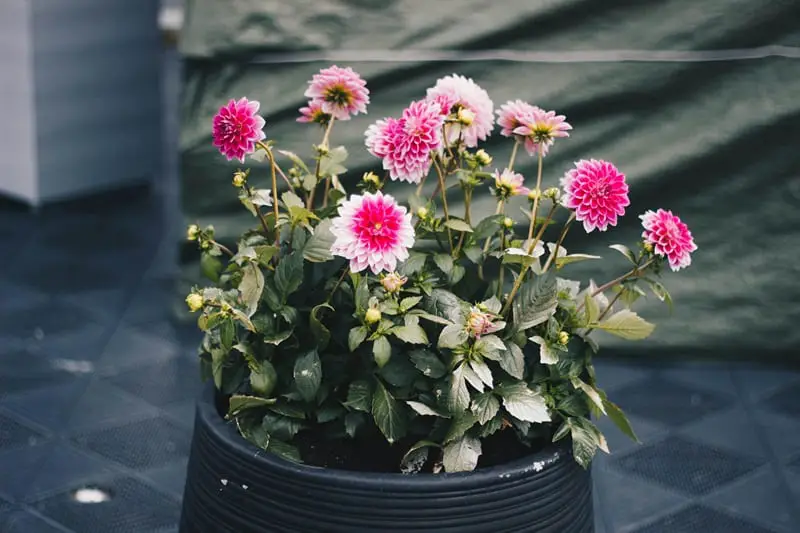
Chrysanthemums are resilient and easy-to-cultivate plants in suitable climates. They prefer direct sunlight and well-drained soil.
They can be an aesthetic addition with their lobed or toothed dark green leaves, which can vary in shape depending on the species and variety.
Their flowers come in a wide variety of shapes, colors, and sizes, ranging from simple blooms to more complex varieties with multiple layers of petals. Colors include white, yellow, pink, red, and purple.
The stem of the chrysanthemum is erect and typically branched. It can reach varying heights depending on the variety, ranging from a few centimeters to over a meter.
7. Chrysanthemum
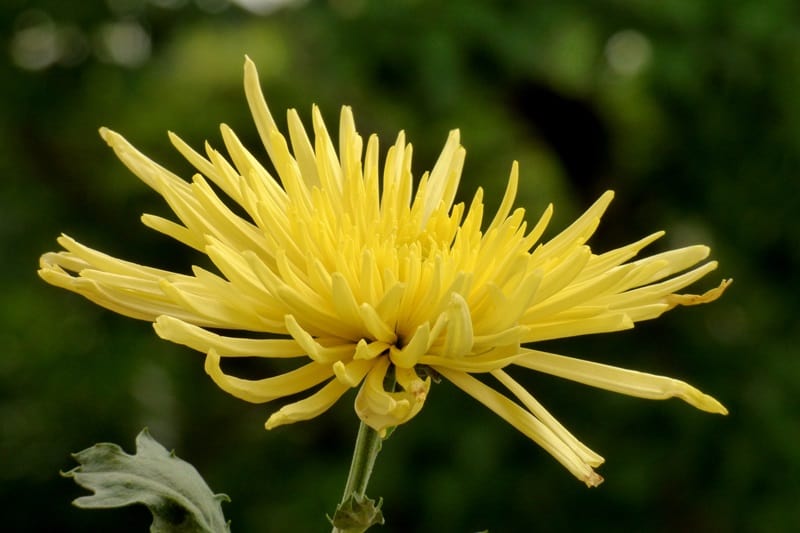
(Chrysanthemum spp.) is known to contain a compound called pyrethrin, widely used in the manufacturing of insect repellents.
Pyrethrin is recognized for its effectiveness in controlling mosquitoes and other flying insects. Its paralyzing and repellent action can help keep mosquitoes away from areas where chrysanthemums are cultivated.
In summary, using chrysanthemums can be a natural and effective strategy for repelling mosquitoes due to the presence of pyrethrin in their flowers.
Additionally, their straightforward cultivation and versatile functions make chrysanthemums an interesting choice for those looking to add plants to their home.
8. Rosemary
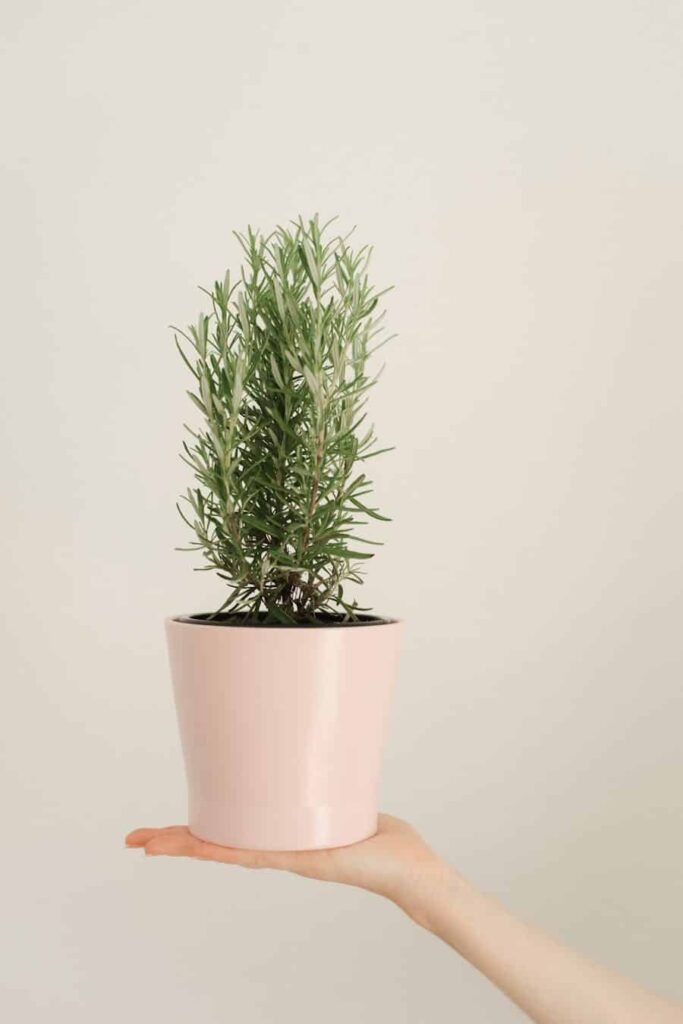
Rosemary, or Rosmarinus officinalis, has narrow, linear, and dark green leaves on the upper side, with a more grayish underside.
They have a distinctive aroma due to the essential oils present in the plant.
Rosemary is a shrub that can reach considerable heights, and over time, it develops a woody, branching stem.
Additionally, it is an aromatic plant that not only adds flavor to your dishes but can also be a natural option for repelling mosquitoes.
Containing essential oils like cineol and camphor, which have insect-repelling properties, including mosquitoes, it is a perfect plant to have in your home.
These compounds emit an aroma that can deter insects. In addition to mosquitoes, the scent of rosemary can also help repel other pests in the garden, providing a natural and multifunctional solution.
Remember that while rosemary can help repel mosquitoes, its effectiveness may vary and may not be as potent as other options. However, its use has additional benefits in terms of gardening and cooking.
9. Catnip
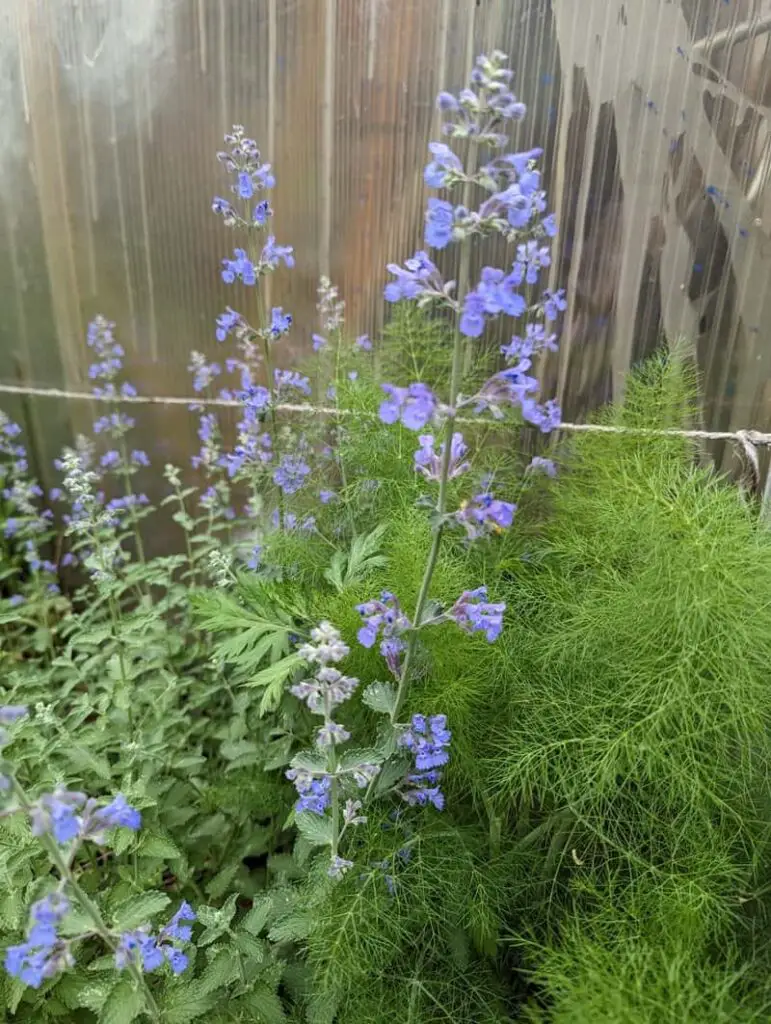
Catnip is a resilient plant that is easy to cultivate in a variety of soil and light conditions. It can thrive in gardens, pots, or as an indoor plant.
Catnip leaves are opposite, serrated, and heart-shaped, with a grayish-green color.
This plant can grow to a height of 60 to 100 cm. Its flowers are small and can be white or slightly purplish. The plant blooms during spring and summer.
A curious fact about this plant is that catnip produces a substance called nepetalactone in its leaves, which acts as a stimulant for many cats, causing a temporary excitement response. Hence its name!
Some sources suggest that this compound may also have certain insect-repelling properties, although specific scientific evidence for mosquitoes is limited.
Some people have used catnip infusions or essential oils derived from the plant in the production of homemade insect repellent products, although their effectiveness may vary.
If you’re looking for a specific plant for this purpose, you may want to consider other options that are better known for their ability to repel insects.
You can also have several of these plants in your home so that they complement each other and better deter insects.
10. Lemon balm
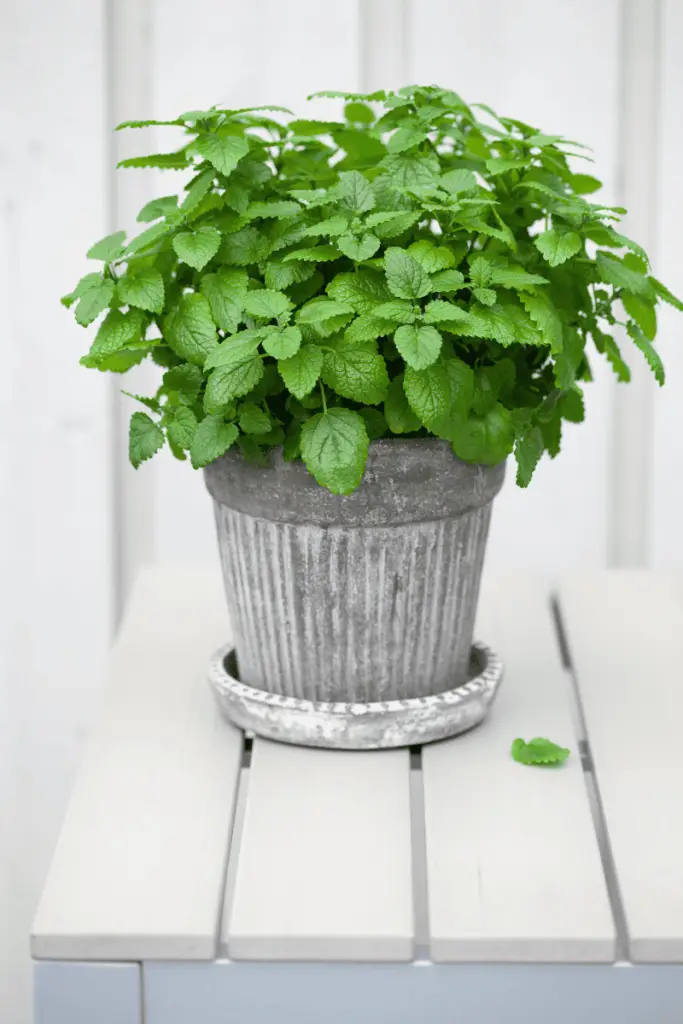
Lemon balm (Melissa officinalis) is a plant that has been traditionally used for its medicinal properties and pleasant lemon aroma.
As a perennial plant, it’s easily cultivated in gardens or pots, making it accessible for beginner gardeners. With its toothed and textured leaves, lemon balm adds an attractive, ornamental touch to your garden.
This incredible and versatile plant contains compounds like citronellal and geraniol, known for their insect-repelling properties, including mosquitoes.
While lemon balm can be a useful addition to repel mosquitoes, keep in mind that its effectiveness may vary based on factors such as the concentration of repellent compounds and environmental conditions.
Combining several repellent plants in your surroundings can be an effective strategy to keep annoying mosquitoes at bay.
11. Geranium
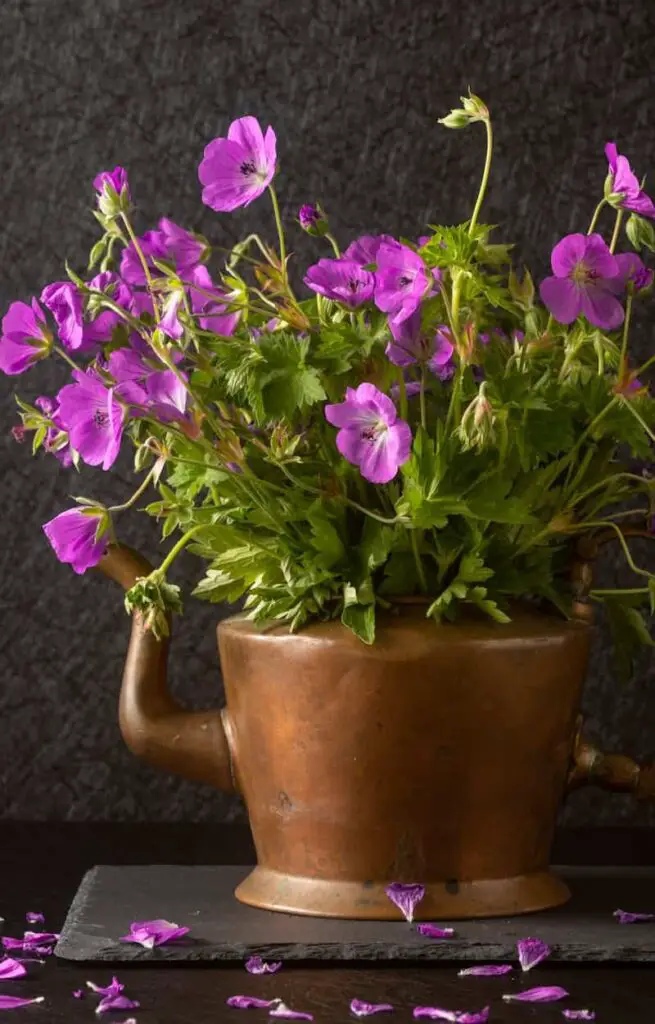
The geranium, especially the citronella-scented geranium (Pelargonium citrosum), is known for its insect-repelling properties, including mosquitoes.
Geraniums are easy to cultivate in gardens, pots, or even indoors. They are resilient and can thrive in various conditions.
Citronella-scented geranium contains citronellol, a compound also found in citronella, known for its insect-repelling properties, including mosquitoes.
In addition to their repellent properties, geraniums produce colorful and attractive flowers that can add a decorative touch to your garden or outdoor space.
There are various varieties of geraniums, and some are specifically designed to have a more intense and effective aroma against mosquitoes.
Conclusion
These 11 plants presented not only add color and fragrance to our surroundings but also play a crucial role in naturally repelling mosquitoes.
By incorporating these plants into our gardens and homes, we are not only cultivating beauty but also strengthening a green shield that enhances our quality of life by protecting us from insects.
Additionally, you can include them in your kitchen, thanks to the aromas, flavors, and benefits these versatile plants offer.
Take advantage of the magic of these plants and transform your environment into a peaceful and harmonious retreat!
